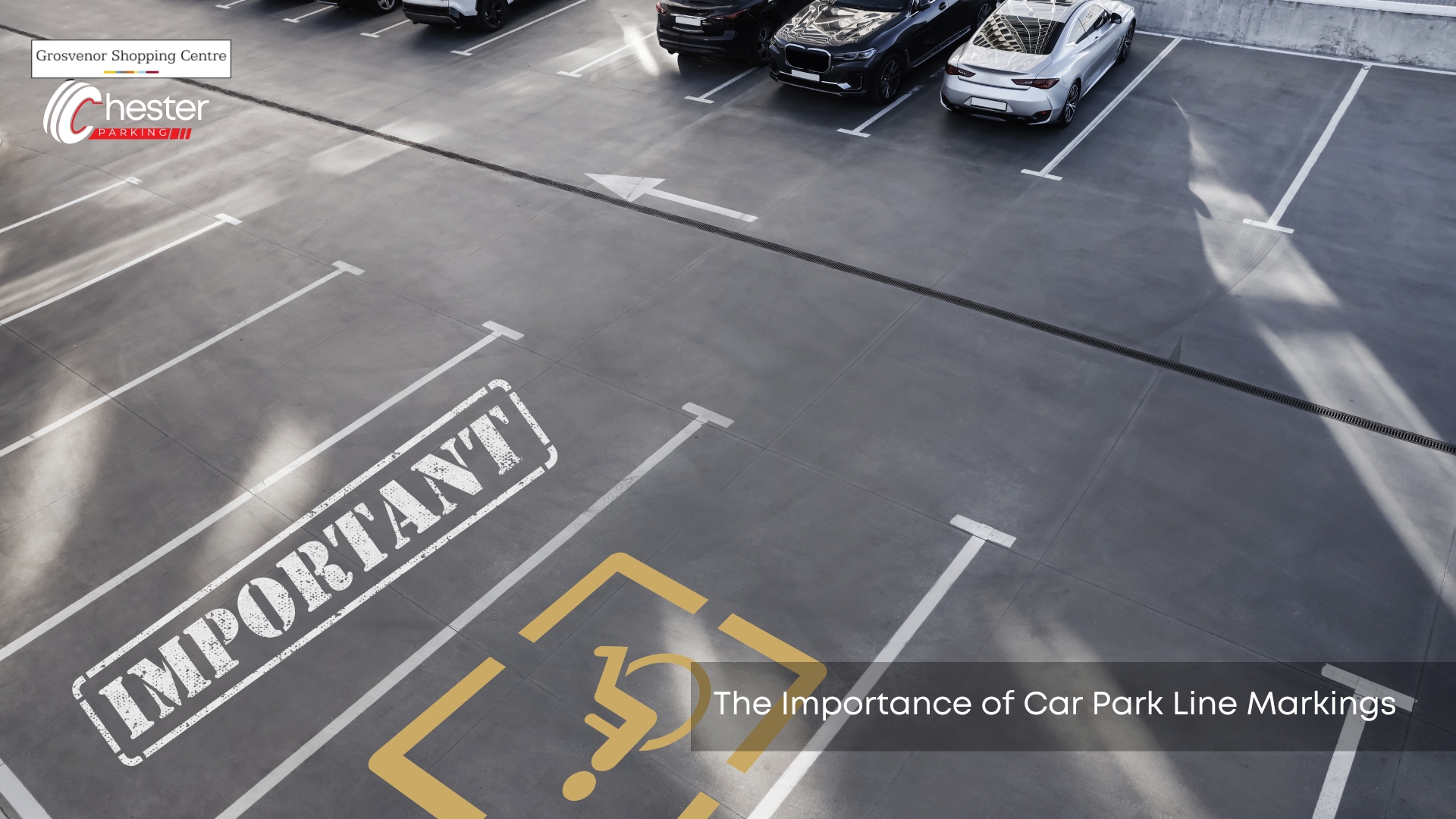Clear and well-maintained line markings are essential for a safe and organised car park. Whether it’s directing traffic, defining bays, or reserving spaces for people with disabilities, line markings play a significant role in keeping parking areas functional. When they fade or are missing, confusion increases, and accidents become more likely to occur. In this guide, we explain why car park markings matter and how they benefit everyone, from drivers to site owners.
What Are Car Park Line Markings and Why Do They Matter?
Car park line markings are painted lines and symbols used to show drivers where to park, drive, and stop. They include bay outlines, arrows, disabled symbols, and loading zones. These markings keep the space organised and easy to navigate. Without them, confusion and poor parking habits take over. Their role is especially clear when examining how they impact safety.
How Do Line Markings Improve Safety in a Car Park?
Line markings improve safety by guiding vehicle movement and helping avoid collisions. Arrows show the correct direction of travel, while stop lines manage traffic at busy exits. Pedestrian walkways reduce the chance of people walking into driving lanes. When markings are clear, both drivers and walkers feel more confident. And when everyone knows where to go, there’s less chance of sudden stops or confusion.
Do Clear Bay Lines Help Prevent Parking Confusion?
Yes, clear bay lines show drivers exactly where to park, preventing overlapping or uneven use of space. This helps maximise the use of the area and prevents disputes between users. It also maintains clear access for larger vehicles and emergency services. Without visible lines, drivers often guess, leading to wasted space or blocked paths. A good layout makes every space easier to use.
Why Is Good Layout Design Important for Traffic Flow?
A well-marked layout helps traffic move smoothly through the car park. Arrows, entry signs, and stop lines guide vehicles in and out without unnecessary hold-ups. Directional markings reduce the risk of head-on incidents in one-way areas. A clear layout also helps reduce time spent searching for a space. When drivers can see exactly where to go, traffic stress and delays go down.
How Do Markings Support Accessibility and Special Bays?
Markings for disabled bays, family spaces, and electric vehicle charging points make the car park more inclusive. These markings must meet size and colour guidelines for visibility and compliance. Bright symbols and text help drivers identify the right spot quickly. Without them, essential spaces may be blocked or misused. Proper signs and paint create a fairer, more user-friendly environment.
Are There Legal Requirements for Car Park Markings in the UK?
Yes, in the UK, there are regulations for public and private car parks, especially around disabled access and safety. For example, blue badge bays must meet minimum size and visibility rules. Businesses must also ensure safe access and marked areas to avoid liability. Following British Standards for markings shows a duty of care. Meeting these rules protects both the site operator and the public.
What Happens When Line Markings Fade or Wear Off?
When markings fade, drivers struggle to follow the layout. This leads to uneven parking, blocked exits, and an increased risk of accidents. In poorly marked car parks, pedestrians may walk into traffic zones, or cars may block access routes. Faded paint can also give a poor impression to customers or visitors. Repainting on time helps avoid these issues.
Can Well-Marked Bays Help Maximise Parking Space?
Yes, clear lines ensure cars park within the correct limits, which avoids wasted room. A good layout can fit more vehicles in the same space by removing guesswork. It also creates proper clearance between bays for doors and mirrors. Even in small car parks, better markings improve capacity. Efficiency and order go hand in hand.
What Types of Markings Are Common in UK Car Parks?
The most common markings include:
- Bay lines – for standard vehicle parking
- Disabled bay symbols – often with wheelchair logos
- Directional arrows – showing one-way traffic flow
- Stop and give way lines – at junctions within the car park
- Hatched areas – to keep access or fire lanes clear
Each one plays a role in keeping the space safe and easy to use.
How Often Should Line Markings Be Repainted?
Line markings should be checked regularly and repainted as needed, typically every 1 to 3 years. High-traffic areas may need more frequent attention. Faded or chipped paint should be addressed before it becomes a problem. Using long-lasting, weather-resistant paint helps reduce the need for maintenance. A fresh coat makes a big difference in safety and appearance.
Who Benefits Most from Proper Car Park Markings?
Everyone benefits from drivers who park more easily to pedestrians who walk more safely. Site owners benefit from fewer complaints, better reviews, and smoother operation. Clear markings also help delivery vehicles, emergency services, and service teams navigate their routes effectively. It’s a simple upgrade that improves the entire experience, as shown in other well-managed locations like Parking Chester.
Can Fresh Line Markings Improve Customer Experience?
Yes, customers notice a tidy, well-marked car park. It makes a positive first impression and shows that the site is cared for. In retail or hospitality settings, this can encourage return visits. Well-marked holiday parking areas are especially helpful for travellers unfamiliar with the layout. It also reduces minor frustrations, such as unclear bays or blocked paths. Well-presented spaces give users a better sense of trust and ease.
Best Way to Keep Line Markings Clear and Effective
The best way is to schedule regular checks, repaint when needed, and use durable materials. Work with professional line marking companies to follow proper standards. Keep areas clean and fix damage promptly. Combine good maintenance with clear signage for best results. A well-marked car park is safer, more efficient, and better for everyone, especially in busy train station parking where traffic moves quickly and space is tight.nd better for everyone.


Leave a Reply